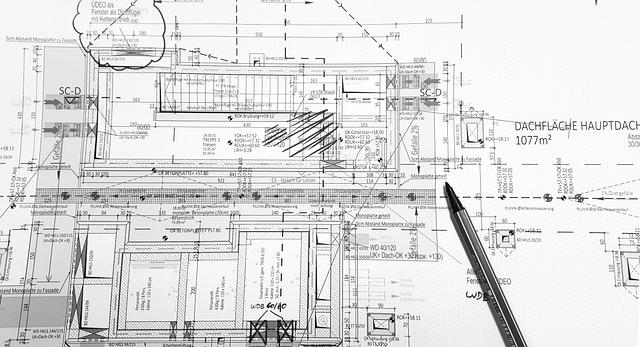In the ever-evolving landscape of weight loss strategies, fasting has emerged as a compelling method that not only challenges conventional dietary norms but also offers a structured approach to shedding pounds. As individuals seek efficient and sustainable ways to achieve their weight loss goals, fasting presents a unique opportunity to harness the body’s natural metabolic processes. This article delves into the science and practical application of fasting, providing a comprehensive guide on how to effectively incorporate this method into your weight loss regimen. By examining the physiological mechanisms activated during fasting, such as ketosis and autophagy, we will explore how these processes contribute to fat loss and overall health improvement. With a confident stride, we will navigate through the various fasting protocols, address potential challenges, and offer evidence-based insights to empower you on your journey towards a healthier, leaner self.
Understanding the Science Behind Fasting and Weight Loss
Fasting, an age-old practice, has gained attention in modern science for its potential benefits in weight management. At its core, fasting influences the body’s metabolic processes by triggering a shift from glucose to fat as the primary energy source. This metabolic switch is facilitated by the reduction of insulin levels, which encourages the body to tap into stored fat for energy. Ketosis, a state where the body produces ketones from fat, often occurs during fasting and is crucial for effective weight loss.
Moreover, fasting promotes the production of human growth hormone (HGH), which aids in preserving lean muscle mass while promoting fat breakdown. The interplay of these physiological processes not only helps in shedding pounds but also enhances overall metabolic health. Several types of fasting can be explored, such as:
- Intermittent Fasting (IF): Cycling between eating and fasting periods, commonly in a 16/8 format.
- Alternate-Day Fasting: Alternating between days of eating freely and days of consuming minimal calories.
- Extended Fasting: Going without food for more than 24 hours, which should be approached with caution and professional guidance.
These methods leverage the body’s natural metabolic pathways to optimize weight loss while maintaining nutritional balance.
Choosing the Right Fasting Method for Your Lifestyle
Fasting can be a powerful tool for weight loss, but selecting the right approach is crucial for aligning with your lifestyle and maximizing results. Intermittent fasting is one of the most popular methods, allowing flexibility in your eating schedule by alternating between eating and fasting windows. This can include strategies like the 16/8 method, where you fast for 16 hours and eat during an 8-hour window, or the 5:2 approach, which involves eating normally for five days and significantly reducing calorie intake on two non-consecutive days.
For those with a busy schedule, time-restricted feeding might be more suitable, as it focuses on consuming all daily calories within a specific timeframe each day. Alternatively, the alternate-day fasting method involves fasting every other day, which can be more demanding but offers substantial metabolic benefits. When choosing a fasting method, consider factors such as your daily routine, work commitments, and social life. By tailoring your fasting approach to your lifestyle, you can enhance adherence and achieve more sustainable weight loss outcomes.

Integrating Nutritional Strategies with Fasting for Optimal Results
To maximize the benefits of fasting, it’s essential to complement it with well-planned nutritional strategies. Intermittent fasting, when paired with a balanced diet, can significantly enhance weight loss results. Here are some key nutritional strategies to consider:
- Focus on nutrient-dense foods: During your eating windows, prioritize whole foods like vegetables, lean proteins, and healthy fats. These provide essential nutrients while keeping calorie intake in check.
- Hydration is crucial: Drinking plenty of water is vital, especially during fasting periods. It helps maintain energy levels and can curb hunger pangs.
- Plan your meals: Ensure that your meals are balanced and include a mix of macronutrients. This helps maintain stable blood sugar levels and reduces cravings.
Integrating these strategies not only enhances the efficacy of fasting but also supports overall health and well-being. By carefully planning your nutrition, you can transform fasting into a powerful tool for weight loss.

Monitoring Progress and Adjusting Your Fasting Plan
Keeping track of your progress is crucial when integrating fasting into your weight loss journey. Start by maintaining a detailed journal that includes your daily fasting periods, eating windows, and any notable changes in your physical and mental well-being. Regularly review this data to identify patterns or obstacles that may require adjustments. Additionally, weigh yourself consistently, preferably at the same time each day, to monitor weight fluctuations. Remember, the scale isn’t the sole indicator of success; take note of other changes such as increased energy levels, improved sleep, or changes in clothing fit.
As you assess your progress, be prepared to make informed modifications to your fasting plan. Consider the following adjustments if you’re not seeing the desired results:
- Alter the Fasting Window: Experiment with different fasting durations, such as extending your fasting period by an hour or reducing it if you feel overly fatigued.
- Modify Meal Composition: Evaluate the nutritional value of your meals during eating windows. Focus on whole, nutrient-dense foods that support your energy needs.
- Incorporate Physical Activity: Introduce a regular exercise routine to complement your fasting efforts and enhance calorie burn.
Embrace the flexibility of fasting and trust your body’s signals. By continuously monitoring and refining your approach, you’ll enhance the effectiveness of your weight loss strategy.
